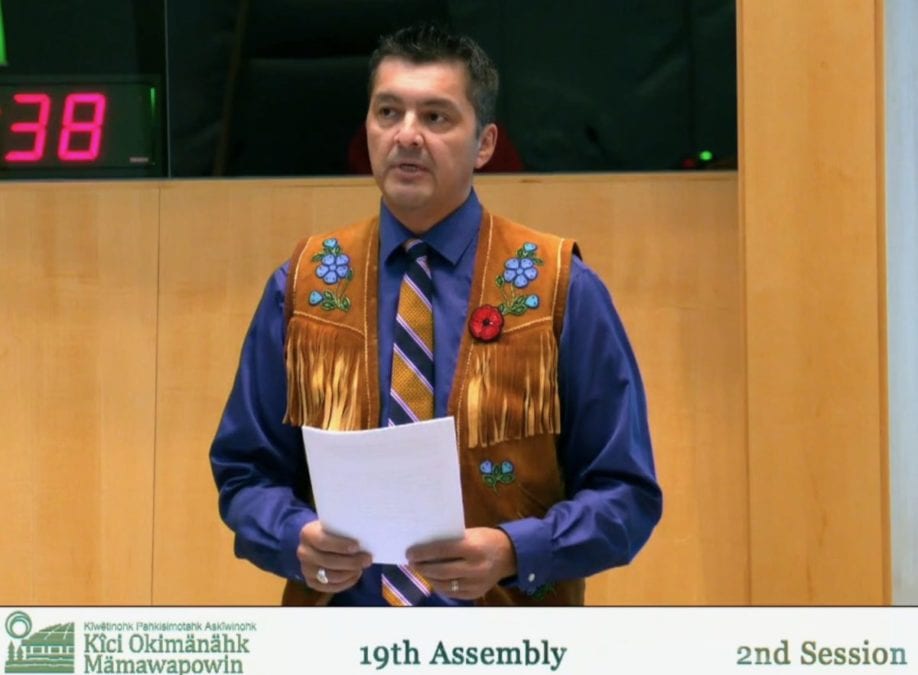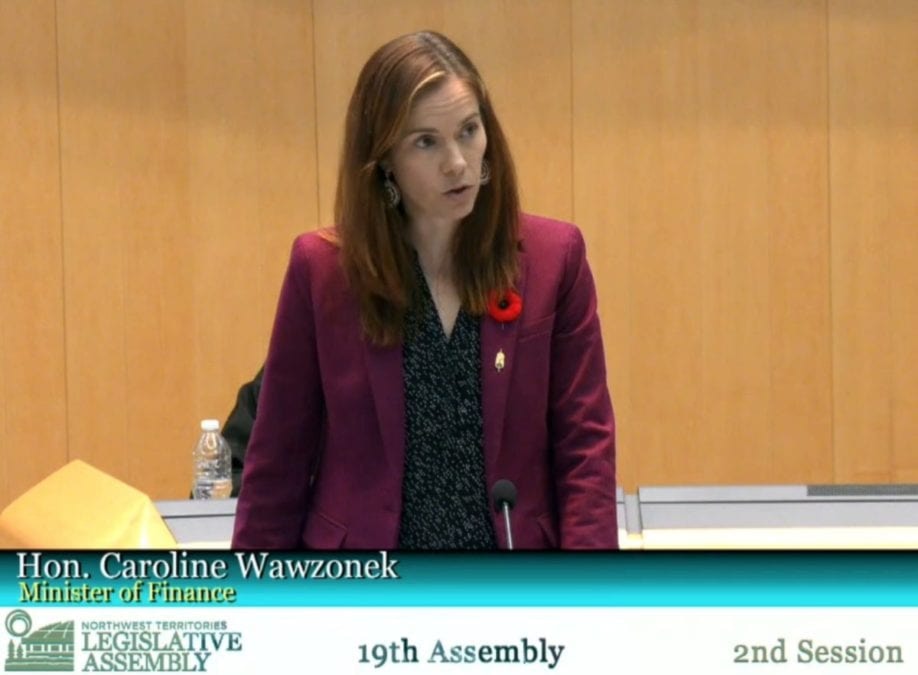Indigenous people make up about half of the NWT's population but have represented only 30 per cent of the GNWT's workforce for the last several decades, Finance Minister Caroline Wawzonek said in the legislative assembly on Wednesday.
That statistic comprises 21 per cent Indigenous women and nine per cent Indigenous men, Wawzonek added, a fact that raises questions about the government's Affirmative Action Policy.
The finance minister acknowledged that affirmative action itself can't address the root causes that contribute to the lack of growth in Indigenous representation among public servants.

GNWT image
"This is a complex issue that will not be solved by a one-size-fits-all approach. Challenges to improved Indigenous representation exist at every stage of a public servant’s career path, including hiring, retention, promotion and succession planning," Wawzonek said.
Over the years, the government has implemented programs aimed at increasing Indigenous representation in the GNWT, including the Indigenous Career Gateway Program, the Regional Recruitment Program, the Internship Program, the Summer Student Employment Program, and the Indigenous Management Development and Training Program, which helps Indigenous staff access funds for professional development.
The GNWT's Cultural Awareness and Sensitivity Training is being redeveloped to create understanding of the impact of colonization, to help government employees recognize collective roles in reconciliation, and to provide all employees with the tools to be culturally competent.
That training will be mandatory for all GNWT employees and will be available to members of the public as well. It will be released during winter 2021.
Wawzonek said the Finance Department is also developing an Indigenous Recruitment and Retention Framework that will include departmental Indigenous employment implementation plans with distinct targets.
Problematic hiring process
Thebacha MLA Frieda Martselos said the affirmative action policy is fine, the problem is with the people doing the hiring.
"There can be no more gaps, no excuses, no nepotism, no conflicts of interest, no hiring our friends, no tailoring job descriptions to match certain people's resumes, only strictly professional, neutral decisions based on qualifications," Martselos said.
She asked if Wawzonek would commit to changing the way senior management and human resource officials apply the affirmative action policy to accomplish its original intent.
The finance minister said she wants to commit to ensuring that each department cooperates with human resources to help ensure a representative public service, follows the affirmative action policy and is conscious of their own biases while not relying on those biases.
Gender and education gaps
Monfwi MLA Jackson Lafferty returned to the statistic that Indigenous men represent nine per cent of the GNWT workforce and asked what special initiatives Wawzonek would introduce to increase their success rate in the government.
Wawzonek said Indigenous men aren't specifically being targeted, rather "Indigenous Aboriginal Northerners" in general are being targeted.
"I suppose if there are more Indigenous male Northerners applying, then that is more opportunity to have them hired. If every department has targets within their departments, then each one can be held accountable to ensure that those things are happening," she said. "The Indigenous framework that we are developing for the recruitment and retention framework is meant to have targets, department by department."
Lafferty said Nunavut has implemented a strategy to empower young Inuit men to help them succeed in work environments, and asked whether Wawzonek is aware of those efforts.
"(We're conducting) a jurisdictional scan to ensure that we are utilizing best practices from all jurisdictions, and Nunavut is certainly a core example, as is the Yukon," she said. "It is my expectation that both the framework and implementation plans for departments will be completed within the 2021-2022 fiscal year."
Lafferty also pointed to the high school and post-secondary education gap between Indigenous and non-Indigenous Northerners as something that "stacks the deck" against Indigenous people seeking to work in the GNWT.
The educational gap at the high school level was highlighted last February in the auditor general's scathing report on the NWT's education system. It found that less than 50 per cent of Indigenous students graduate high school in Yellowknife and less than 40 per cent graduate in smaller communities.
"Some people think the education gap will not be solved in our lifetime. They think it's big, too big, too complex, but... they're totally wrong. Break a big problem down to 12 component parts, it's not a big problem at all," Lafferty said.
Deh Cho MLA Ron Bonnetrouge also touched on educational disparities, and cited a report from 1989 that indicated most government jobs at the time only required a Grade 10 education but the majority of Indigenous people had less than a Grade 9 education.
Education levels for the Indigenous population have increased since 1989, but the gap between Indigenous and non-Indigenous residents persists, according to a 2019 report from the NWT Bureau of Statistics. That report shows that only 8.9 per cent of Indigenous people have a university degree, compared to 40.4 per cent of the non-Indigenous population.
"I would like to point out that in the many meetings with the senior management teams of the GNWT that I was involved with, I did not see any First Nations people amongst them," Bonnetrouge said.
Recruitment process
The interview process itself for GNWT jobs can be a barrier for Indigenous applicants because it's not informed by Indigenous culture, said Rocky Simpson, MLA for Hay River South.
"I am of the belief that our failure starts at the first stage of recruitment and... the qualification requirement, interview format and interview process," Simpson said. "Due to cultural differences, the current process and format does not acknowledge, give way to and respect Aboriginal Indigenous knowledge and the way we learn, communicate or present ourselves during the interview process."
He later asked whether Indigenous culture is incorporated into the interview process. Wawzonek says her ministry's human resources division employs "behavioural-based interviews" where candidates are encouraged to tell personal stories and anecdotes rather than respond to a set of predetermined questions.
"Part of the idea there is that it is supposed to be an opportunity to create a better type of communication and dialogue for people in an interview."
